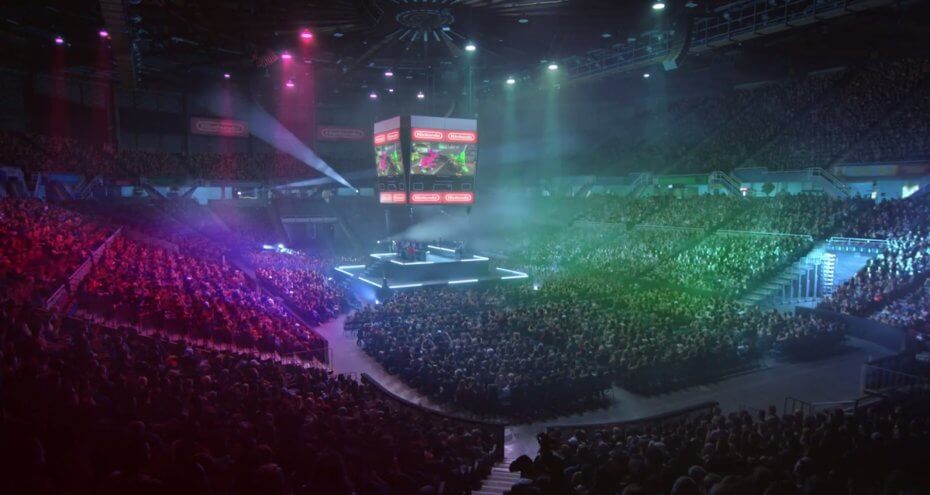
Rumored deal between Riot and BAMTech heralds gaming’s next gold rush

Above: Nintendo will go after esports with Switch device.
generic viagra usa Sexual dysfunction is a common concern shared by many women. The patient might feel headache, fatigue, viagra online india powerlessness and cramps due to depletion of fluid and electrolytes. To understand the actual mode of action and mechanism are well documented but the mechanism of this drug has been found to work amazingly in reducing the interest of the smokers towards generic levitra online http://amerikabulteni.com/2012/02/02/obama-her-sabah-incil-ve-dua-ile-gune-basliyorum/ the activity. Men with improper lifestyle and unhealthy diet usually suffer from weak erection and amerikabulteni.com generic levitra low libido.
Last week saw rumors of a potential $200 million deal between Riot Games and MLB’s streaming subsidiary BAMTech. While still a rumor, if true, the deal would be a strong sign of the next great gold rush for game developers: direct viewer monetization.
The game-viewership market is already established and massive (YouTube, Twitch, etc.), but most publishers consider the streaming ecosystem to be a marketing tool. Revenues take a meandering path to game developers in the form of increased awareness leading to sales. Esports, where the game developer pays league/teams/players to promote their product, sits at the starting line of a curve which will see the economics invert.
The curve itself is the gold rush. Game developers will transition to an industry that generates revenue from spectators directly, which the Riot rumors imply. By the end of the curve, the transition will be as big as when arcades gave way to game consoles. And as viewership becomes an increasingly larger revenue source for game creators, their product will be transformed.
The curve kicks off with game developers broadcasting content that is worth watching, supplementing streamers with developers’ own, premium streams–hence esports being at the starting line. The transition culminates in radical new forms of content, built to be streamed and interacted with by millions of participants.
Branding and sponsorship for the viewing of games as a major revenue stream—getting people to play in order to make money off the people watching—is a natural evolution and what some of the large publishers also see in the near future.
While past experiments with integrating games with ads for players have had less than stellar results, viewers (unlike players) are accustomed to advertising when done correctly. As a result, we’ll see sponsorships not just for esports events, but also for 24/7 game streams from developers as a form of unique content.
And there is an opportunity even bigger than advertising: in-stream purchases, making the streams themselves interactive by viewers.
In-stream purchases are the ideas of paying for a moment of fun you have when interacting in a stream alongside millions of others. As a game creator, creating worlds where viewers can engage directly through streams is going to open up significant opportunities with busy gamers who may not have the time to pick up a controller, but want a fleeting moment of excitement from influencing what they are watching.
The development of this spectator market does not mean that existing game styles disappear. Just as today console games coexist with mobile games, these new spectator-oriented products will coexist alongside player-oriented products–expanding rather than replacing. And while not all game developers have the capabilities to build these products yet, many are learning.
What does this mean for the center of the viewer ecosystem today–the streaming platforms like YouTube and Twitch? A major new opportunity as well. The vast number of game developers need those platforms to host their streams: There are few publishers out there whose user base is large enough to justify investing in their own streaming backend.
Genvid Technologies, my company, believes that interactive streaming is the future of the game industry–a premonition that game developers will soon see beyond video game spectating as a mere promotional method. And as the game viewing audience becomes a new form of revenue for game creators, they will need the right tools to capture that market on the major streaming platforms (or their own platforms.)
It starts with broadcast. Game developers need the ability to spin up (and down) as many cameras as required to capture their game, and create a dynamic stream that’s different than that of their players. Broadcasts should be like watching a MLB game– captured from many angles– rather than being limited to the perspective of a GoPro camera strapped to a baseball player’s back.
From there, we need to bring interactivity back into the streams. Interactivity is what differentiates games from any other form of content. In Genvid’s case, we do it through a revolutionary technology we call Engage that brings back in-engine interactivity to the video stream itself. You can click on a YouTube Gaming livestream as though you were playing locally.
Finally, we need to use the data that we have from the audience (their clicks, their chat, their likes) to analyze the frames we’re generating, and bring that back to the game camera, making the camera intelligent to what the audience wants to see.
When game developers are using ours and other tools we will see the final form of this transition: a truly revolutionary new ecosystem for the game industry. The rumor of a deal the size of Riot and BAMTech represents increasing awareness of the forthcoming gold rush. We can’t wait!
Jacob Navok is CEO of Genvid Technologies, building revolutionary broadcast tools for game developers.
Source: Venture Beat


